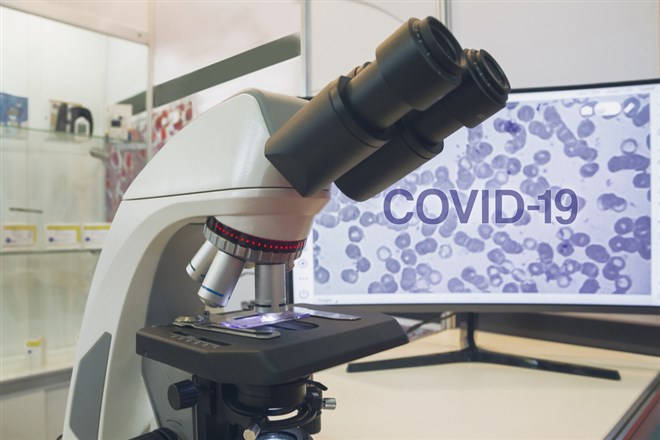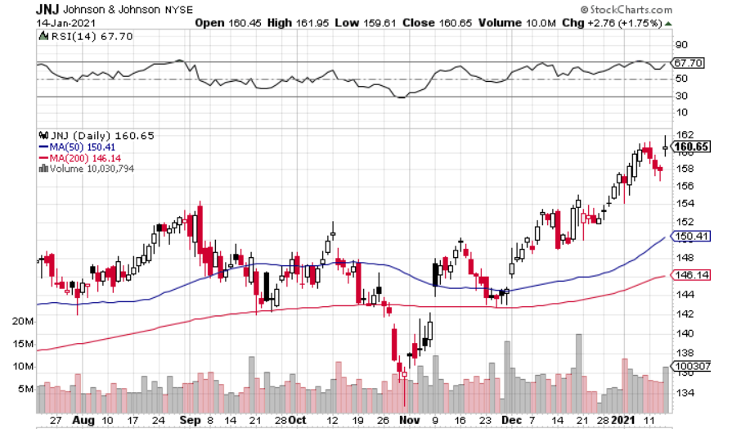
It may appear that the vaccine race is over and
Pfizer (NYSE: PFE) and
Moderna (NASDAQ: MRNA) are going to be responsible for most inoculations, but
Johnson & Johnson (NYSE: JNJ) has other ideas. On Wednesday, the company posted encouraging trial data on its Ad26.COV2.S vaccine that gave investors hope that J&J could have an FDA-approved vaccine on the market in weeks.
Being first to market is an advantage for the Pfizer and Moderna vaccines, but the J&J vaccine could enjoy a few of its own advantages. Advantages that could prove more important in the long-run.
Here are three reasons why J&J’s vaccine could ultimately overtake its competitors:
- It only requires one dose. The Pfizer and Moderna vaccines require two doses. This isn’t just a matter of inconvenience – though people obviously prefer to save time whenever possible – but also a matter of only dealing with vaccine side effects one time.
- It is easier to distribute. The Pfizer and Moderna vaccines must be stored at extremely cold temperatures, which introduces logistical challenges – even more so in developing countries. The J&J vaccine isn’t subject to the same requirements, which could make it easier and faster to vaccine people across the country and world.
- The J&J vaccine uses a technology with a longer track record. Every indication is that there are no long-term side effects from the Pfizer and Moderna vaccines, but they use mRNA technology, which doesn’t have much of a track record. The J&J vaccine’s technology, on the other hand, has already been used for J&J’s Ebola, Zika, HIV and RSV vaccines to vaccinate more than 180,000 people. The J&J vaccine’s single dose delivers spike proteins through a disabled common cold virus that can’t infect the recipient. Whether you think the vaccine fears are rational or irrational, a lot of people are afraid of long-term side effects and are more likely to opt for a vaccine technology with a track record.
Don’t get too excited until J&J reports its Phase 3 trial later this month though. There is optimism around that release, but unless J&J’s vaccine can break the 90% efficacy level, it won’t be very competitive.
That said, the beauty of a Johnson & Johnson investment is that even if the company doesn’t make a cent on COVID-19 vaccines, it is still a quality investment.
The company is set to report its Q4 earnings next week, and after an impressive Q3, J&J investors should be optimistic about Q4.
In Q2, revenue was down 10.8% yoy, but third quarter revenue came in 1.7% higher than the year-ago period. Investors shouldn’t expect as much sequential improvement from Q3 to Q4, but the consensus estimates of $21.64 billion in revenue seem a bit conservative.
The over-the-counter (OTC) medicine category is one area that could have some upside in Q4. OTC medicine sales growth slowed in Q3, but with coronavirus cases peaking, people likely stocked up on Tylenol in Q4. An upside surprise in this category wouldn’t do much for J&J stock, but hey, it’s something.
But the Long View is What’s Most Important
It’s a worthwhile endeavor to project J&J’s Q4 earnings, but it’s not going to make you rich. This stock is no Tesla (NASDAQ: TSLA), for better or worse.
Instead, you want to take the long view on a J&J investment. And when you do that, J&J looks excellent. It is trading at less than 18x forward earnings, even though it is trading right around all-time highs.
The company is a dividend king that has raised its dividend for the last 57 consecutive years. The 2.48% dividend yield is fantastic. The 10-year treasury is yielding just over 1%, and that’s after a large increase in yields. Johnson & Johnson’s 60.8% payout ratio is sustainable, as this is a mature company with stable cash flows that doesn’t need to make massive investments to fuel growth.

Getting back to the vaccine: it is best looked at as potential gravy on a solid investment.
If the vaccine proves to have 90% or more efficacy and receives FDA approval, it could give J&J a nice long-term boost. But if the vaccine fails miserably, J&J is still an excellent long-term play.
Companies in This Article: